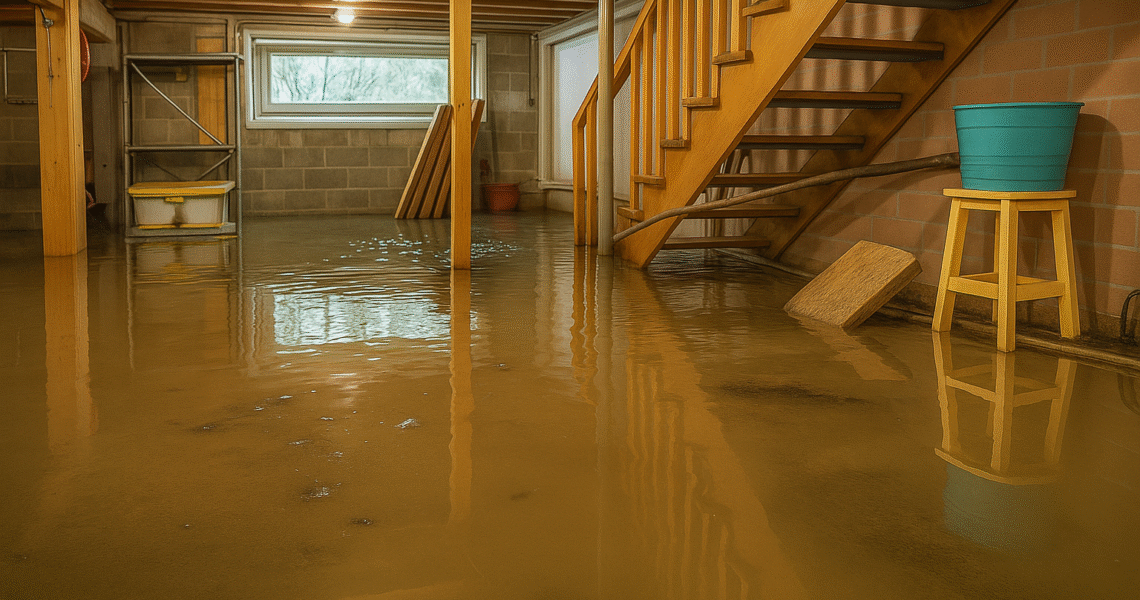The Ultimate Guide to Flooded Basement Cleanup in Toronto: Step-by-Step from Flood Assist Experts

Why Basement Flooding is Common in Toronto and the GTA
Toronto’s unique geography and infrastructure make basement flooding a frequent issue. The city’s combined sewer systems, prevalent in areas like the Danforth and High Park, often become overwhelmed during storms, leading to flooded basements. The 2013 Toronto flood caused $1 billion in damages, with thousands of homes reporting basement flooding. More recently, the 2024 storm saw insured losses of $940 million, with flooded basements being a primary claim type. Suburbs like Markham and Richmond Hill face additional challenges due to clay-heavy soils that retain water, increasing hydrostatic pressure on basement walls.
Climate change exacerbates basement flooding, with Environment Canada noting a 20% increase in extreme rainfall events over the past decade. Aging infrastructure—some GTA sewers date back to the 1920s—struggles to cope, making flooded basements a reality for many. Flood Assist’s experience across Toronto shows that quick response is critical to minimizing damage.
Step-by-Step Guide to Flooded Basement Cleanup
Handling a flooded basement requires a structured approach to ensure safety and thorough restoration. Below is Flood Assist’s expert step-by-step guide for Toronto and GTA homeowners.
Step 1: Assess and Secure the Area
Upon discovering basement flooding, prioritize safety. In Toronto, where electrical panels are often basement-level, cut power at the main breaker to avoid electrocution—a risk in older homes in North York or East York. Do not enter a flooded basement if water exceeds ankle depth; call Flood Assist for professional assessment. Document damage with photos and videos for insurance claims, as GTA flooded basement claims average $43,000. Notify your insurer immediately to start the process.
Step 2: Water Extraction
Removing standing water is critical to prevent further damage in a flooded basement. For minor basement flooding, use a submersible pump or wet vacuum. For deeper water or sewage contamination—common in Toronto’s combined sewer areas like Etobicoke—professional equipment is necessary. Flood Assist uses truck-mounted extractors capable of removing thousands of gallons per hour, ensuring rapid water removal. Wear PPE (gloves, boots) if sewage is present to avoid health risks.
Step 3: Drying and Dehumidification
Toronto’s humid summers accelerate mold growth in flooded basements. Deploy high-velocity fans and industrial dehumidifiers for 48-72 hours to dry the space. Aim for 30-50% humidity, monitored with hygrometers, to prevent mold spores that thrive above 60%. Flood Assist uses advanced drying systems to ensure no hidden moisture remains in walls or floors, a common issue in GTA basements with concrete foundations.
Step 4: Cleaning and Sanitization
After drying, clean all surfaces affected by basement flooding. Remove saturated materials like carpets, drywall (up to 2 feet above the waterline), and insulation, as they harbor bacteria. For sewage-contaminated flooded basements, use antimicrobial treatments. Flood Assist applies hospital-grade disinfectants and HEPA filtration to sanitize Toronto homes, ensuring safety from pathogens prevalent in GTA floodwater.
Step 5: Restoration and Repairs
Restoring a flooded basement involves repairing structural damage and rebuilding with moisture-resistant materials. Fill foundation cracks with epoxy injections, replace drywall with mold-resistant versions, and install waterproof flooring suited to Toronto’s climate. Flood Assist restored a Scarborough home after a 2024 basement flooding event, completing repairs in five days, saving the client $10,000 by acting quickly.
Common Mistakes to Avoid During Basement Flooding Cleanup
Toronto homeowners often make errors that worsen flooded basement damage:
- Delaying Action: Waiting even 24 hours can lead to mold growth, doubling repair costs.
- Ignoring Sewage Risks: GTA basement flooding often involves contaminated water, requiring professional sanitization.
- Inadequate Drying: Skipping dehumidifiers leaves hidden moisture, a common issue in Toronto’s humid climate.
- DIY Overreach: Attempting complex flooded basement cleanups without equipment risks incomplete restoration.
Toronto-Specific Considerations for Basement Flooding
The GTA’s unique challenges require tailored approaches:
- Combined Sewers: Areas like North York have aging systems, increasing flooded basement risks. Install backwater valves, subsidized by the City up to $3,400.
- Clay Soils: Prevalent in Markham, these retain water, necessitating robust drainage solutions.
- Storm Frequency: Toronto’s 2024 storms highlight the need for preparedness. Flood Assist offers pre-storm inspections.
Frequently Asked Questions About Flooded Basement Cleanup
How long does basement flooding cleanup take?
Minor cases take 2-3 days; severe flooded basements may take a week. Flood Assist’s rapid response minimizes downtime.
Can I clean a flooded basement myself?
DIY is possible for minor basement flooding, but sewage or deep water requires professionals like Flood Assist.
What equipment is needed for flooded basement cleanup?
Pumps, wet vacuums, fans, dehumidifiers, and disinfectants are essential. Flood Assist uses industrial-grade tools for GTA homes.
Why Choose Flood Assist for Basement Flooding Cleanup in Toronto?
Flood Assist is the GTA’s trusted name for flooded basement cleanup. Our 24/7 emergency response, advanced equipment, and local expertise ensure your home is restored efficiently. From Oakville to Scarborough, we’ve helped thousands recover from basement flooding. Contact us for expert service.
